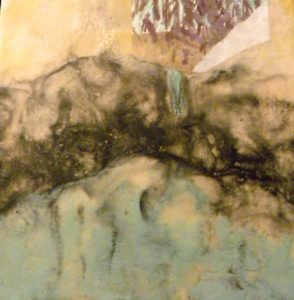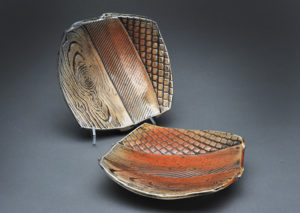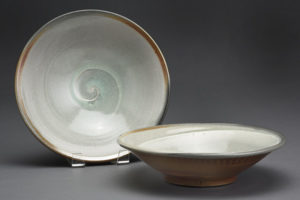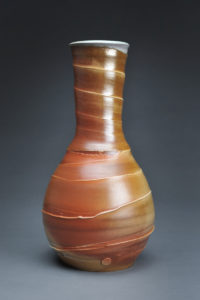About Larain Matheson

“My inspiration and passion comes from the ELEMENTS: EARTH, AIR, FIRE AND WATER. Nature: rocks, landscapes, skies, ocean influence me.
As Matisse says, “the artist is an explorer.” That I am! I love to explore the medium of encaustic and collage. I abstract from nature with paint and beeswax and oil, to become a new space and form. I then fuse each layer with a torch to create transparencies of layers. Living on the northern California coast influences my imagery with more abstract shapes. I have shown in galleries in Colorado and now I exhibit at the Encaustic Art Museum in Santa Fe, NM., locally at the Dolphin Gallery, and the Discovery Gallery where I am a member of the arts collective. My work is in many collections throughout the USA.
I received an M.F.A. from U.C.L.A. where I studied with Richard Diebenkorn, and in S.F. with J. De Feo, both well-known contemporary California artists.

The layering of beeswax is a process I got hooked on. My tools are beeswax, oils mixed with beeswax, a torch, and a heat gun. I really am in the moment with this process which takes so many layers of brushing and fusing, sometimes 10-20 layers. The transparency and sensuality of the wax and working with many layers, is what delights me. Seeing the painting with many layers of wax and oil built up and fused is a magical process.
My work can be seen at larainmathesonart.com and at my studio by appointment. I have been a part of the Studio Discovery Tour for about 6 years. I also continue figure paintings and drawings along with the inner landscapes I paint. I am influenced by the natural architecture of the land and the connections in life through the language of line, color and shape. My paintings try to capture that magic moment where the seen and unseen is made more “visible”.”
About Satoko Barash
“FORM, SURFACE AND FUNCTION”

In my studio, I form shapes either on the wheel, by hand, or fashioned from flat slabs. Most of my basic forms begin on the wheel, then are further altered when clay has dried to a leather-hard consistency. Once the form is created, I work on the surface design with a sharp knife, the marks then filled with colored slip. The hours fly by while absorbed in the making process.
There are too many variables to achieve absolute control of the process, particularly when engaging the capricious nature of soda firing. Rather than control, it is more like influencing shape, texture, and color as in sluicing a stream. The result remains somewhat unpredictable, and in this way, feels more alive.
At school, I started out as a sculptor. However, I quickly became intrigued by the potential function of a piece. The very notion of utility makes the art more approachable to the users, while at the same time more challenging for the makers.

Even at this stage in the studio, I imagine the use of my work in customers’ daily lives. In this way, functional pottery is embedded in the web by which we are all connected, and this notion inspires me. We depend upon each other in so many ways. I pay attention to the characteristic of types of clay, striving toward simple elegant shapes and balance the elements of form while attempting to construct useful pottery that feels good in the hands or when brought to the mouth. The thought that my work enriches someone’s every day rituals like eating, drinking, serving and entertaining provide motivation for me.
All my pottery is fired twice; the first, called “bisque-firing,” rises to 1830 degrees in an electric kiln. When cooled, glazes are applied to the interior of the pots. The outer surface is either unglazed or has a thin coating of “slip,” a kind of watery clay. Flashing slip is a particular type of slip that reacts with the atmosphere in the kiln and creates deep orange surfaces, also allowing the clay surface to more effectively catch the footprint of the soda/salt vapor traveling through the kiln. Wax decorations are applied before the slip, and brush work, with a Japanese calligraphy brush, may be added to the work after the slip is dry.

I spray 3 pounds of soda ash and 1 pound of baking soda mixed with hot water. When the temperature of the kiln rises to about 2200 degrees, these are each injected 12 times in four different soda ports, over a period of about 90 minutes. The soda vaporizes immediately and dances around the vessels, moving between them before finally exiting through the chimney. This decorates the outside of the work while it adds color to the glazed interior. Following the spraying, the firing continues till the temperature reaches about 2400 degrees. The decision to shut off the kiln is guided by the bending of specially made ceramic cones that indicate the cumulative effect of temperature and are visible inside the kiln through ports.
The result is a combination of orange peel texture, different shades of orange flashings and/or more dramatic and directional soda surfaces in grey or white depending on where the pieces were located the kiln. One piece may have all of these elements or just one.
I met my husband in New Zealand. He persuaded me to continue my art in this country, where we share a home in Mendocino County, California. I have a studio in my home and receive help and inspiration from our amazing daughter, my loving husband and supportive friends.
 Gualala Arts Promoting public interest and participation in the arts since 1961
Gualala Arts Promoting public interest and participation in the arts since 1961